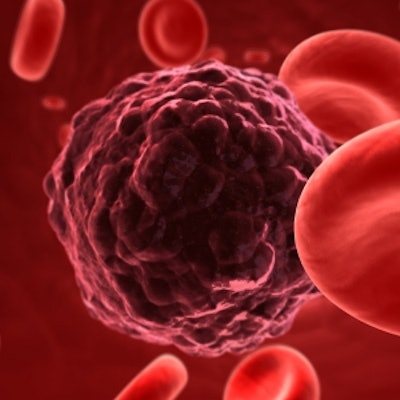
Several indicators on pretreatment FDG-PET/CT scans can help predict overall survival in patients with locally advanced cervical cancer and para-aortic lymph node involvement. The markers could help clinicians steer patients toward more aggressive treatment, according to a February 7 study in Journal of Nuclear Medicine.
French researchers found that total lesion glycolysis and maximum standardized uptake values (SUVmax), as they relate to pelvic and para-aortic lymph nodes, were most effective in determining chances of overall survival in this patient group.
"In addition to its benefits in locally advanced cervical cancer staging, FDG-PET/CT could therefore also provide useful prognostic data in these high-risk patient groups," wrote the authors, led by Dr. Hélène Leray from IUCT-Oncopole in Toulouse, France.
People with locally advanced cervical cancer face a very poor prognosis. If they are to have any chance of extended survival, FDG-PET/CT is recommended as the first step to assess the severity and extent of the disease, as well as the presence of metastases. An accurate evaluation can help physicians chart the most appropriate treatment for these high-risk patients, but which aggressive regimen, beyond standard chemoradiotherapy, would prove beneficial? And which FDG-PET/CT indicators could best predict outcome and the value of treatment?
To answer those questions, this retrospective, multicenter study included 68 patients (mean age, 54.4 years; age range, 27.4 to 80.7 years) with confirmed cases of locally advanced cervical cancer and para-aortic lymph node involvement. Subjects underwent an initial pelvic MRI scan and an FDG-PET/CT scan (Biograph 6, Siemens Healthineers; Discovery IQ, GE Healthcare; or Gemini TF16, Philips Healthcare) before five weeks of chemoradiotherapy and radiotherapy.
From the FDG-PET scans, the researchers calculated SUVmax, metabolic tumor volume (MTV), and total lesion glycolysis for primary tumors, pelvic lymph nodes, and para-aortic lymph nodes, which then were assessed for their correlations with overall survival.
At a median follow-up of 24.3 months, 31 patients (45%) had died from their disease, 16 patients (23%) saw their disease progress, and 21 patients (32%) relapsed. As one might expect, patients with stage III-B or stage IV tumors were four times more likely to have a significantly poorer outcome (p = 0.021).
When adjusted for age, tumor stage and histology, the pretreatment FDG-PET/CT parameters of pelvic lymph node total lesion glycolysis, para-aortic lymph node total lesion glycolysis, and para-aortic lymph node SUVmax were significantly associated with predicting patient survival.
| FDG-PET/CT predictors of survival in advanced cervical cancer | ||
| Hazard ratio | p-value* | |
| Pelvic lymph node TLG | 3.72 | 0.05 |
| Para-aortic lymph node TLG | 3.11 | 0.039 |
| Para-aortic lymph node SUVmax | 4.80 | 0.011 |
*Results are statistically significant.
Patients with a higher SUVmax for cervical tumors or pelvic lymph nodes also tended to have a higher mortality rate, but the numbers fell short of statistical significance.
Leray and colleagues recommended additional studies to "validate the prognostic impact of para-aortic lymph node SUVmax and para-aortic and pelvic lymph node total lesion glycolysis as new metabolic parameters in this high-risk subgroup and, especially, to allow the therapeutic intensification to be adapted."




















